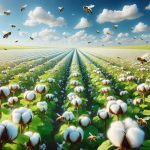Did you know that recycling just one ton of cotton can save approximately 7,000 gallons of water? This statistic highlights the potential of recycled cotton as a sustainable alternative. However, while its environmental benefits are significant, there are substantial challenges and limitations that come with it. What does this mean for the fashion industry, and how can brands balance sustainability with quality? Let’s explore the complexities surrounding recycled cotton.
Table of Contents
Key Takeaways
- Recycled cotton reduces water usage and greenhouse gas emissions, making it a more sustainable alternative to conventional cotton farming.
- The recycling process diverts textile waste from landfills, lowering methane emissions and conserving valuable resources.
- Challenges include reduced fiber strength, quality inconsistencies, and contamination from mixed materials, impacting product durability.
- High collection and sorting costs, along with market volatility, pose economic hurdles for the recycled cotton industry.
- Innovations in processing and growing consumer demand for sustainability are enhancing the viability and acceptance of recycled cotton in fashion.
Understanding Recycled Cotton: Definition and Process
Recycled cotton is a sustainable alternative that transforms post-consumer and post-industrial cotton waste into new fabric.
It starts with collecting discarded garments and textile scraps, which are then sorted and cleaned. You’ll find that the process involves shredding these materials into smaller pieces.
After shredding, the cotton fibers are separated from any non-cotton components, ensuring a pure product. Next, the fibers undergo a carding process, aligning them for spinning.
The process ensures a pure product by separating cotton fibers from non-cotton components before aligning them for spinning.
Once spun, they can be woven or knitted into fresh fabric. This closed-loop system not only reduces waste but also minimizes the need for new cotton production, conserving resources.
Understanding this process helps you appreciate the value of recycled cotton in creating a more sustainable fashion industry.
Environmental Impact of Recycled Cotton
When you choose recycled cotton, you’re making a conscious effort to reduce water consumption considerably.
This sustainable option also helps lower greenhouse gas emissions compared to conventional cotton production.
Water Consumption Reduction
The environmental benefits of using recycled cotton are significant, particularly in reducing water consumption. By choosing recycled cotton, you’re helping to minimize the vast amounts of water typically used in conventional cotton farming.
Traditional cotton production consumes about 7,000 liters of water for producing just one kilogram of cotton. In contrast, recycled cotton requires far less water since it repurposes existing materials instead of growing new crops.
This reduction not only conserves water resources but also lessens the strain on ecosystems and communities that rely on freshwater sources. When you opt for recycled cotton products, you actively contribute to a more sustainable textile industry, ensuring a healthier planet for future generations while making mindful choices for your wardrobe.
Greenhouse Gas Emissions
Choosing recycled cotton greatly cuts down on greenhouse gas emissions compared to conventional cotton production.
When you opt for recycled materials, you’re reducing the need for new cotton farming, which often relies on synthetic fertilizers and pesticides that contribute to greenhouse gas emissions.
By using existing fabric, you’re also minimizing the energy required for processing and transportation. This choice can lead to a significant reduction in carbon footprints throughout the supply chain.
In addition, recycled cotton can help divert textile waste from landfills, further mitigating methane emissions produced by decomposing waste.
Market Dynamics: Growth and Trends
As consumers increasingly prioritize sustainability, the market for recycled cotton is experiencing significant growth and evolving trends.
You’ll notice a surge in brands integrating recycled cotton into their collections, appealing to eco-conscious shoppers. This shift not only boosts brand loyalty but also opens doors to new customer segments.
Additionally, innovations in textile production are enhancing the quality and versatility of recycled cotton, making it more competitive with virgin materials.
Sustainable practices are becoming a key differentiator in a crowded market, driving brands to adopt greener methodologies.
You can expect to see collaborations between manufacturers and retailers aimed at increasing recycled cotton’s visibility, ultimately creating a more sustainable fashion landscape while satisfying your demand for environmentally friendly products.
Challenges in the Recycled Cotton Industry
The recycled cotton industry faces several challenges that you mightn’t be aware of.
Fiber quality limitations and difficulties in collection and sorting can hinder production efficiency.
Additionally, cost and economic barriers often make it tough for companies to scale up their operations.
Fiber Quality Limitations
While recycled cotton offers an eco-friendly alternative to virgin materials, it faces significant challenges in fiber quality that can impact its overall usability.
You might notice that recycled cotton often has shorter fibers, which can lead to reduced strength and durability compared to virgin cotton. This can result in garments that wear out faster or don’t hold their shape well.
Additionally, variations in color and texture may arise from the recycling process, making it difficult for manufacturers to achieve consistent quality.
These limitations can affect not just the performance of the final product but also consumer perception. Understanding these fiber quality issues is essential if you want to make informed choices about the sustainability and longevity of recycled cotton products.
Collection and Sorting Challenges
Steering the collection and sorting process for recycled cotton can be tricky, especially when you consider the varying quality of materials involved.
You’ll encounter challenges like mixed fibers, where cotton blends with synthetics, complicating sorting efforts. Identifying pure cotton among these blends requires time and expertise, which can strain resources.
Furthermore, inconsistent collection sources—ranging from old garments to industrial scraps—add to the complexity. You might also face the issue of contamination, as non-cotton items can sneak into the mix, lowering the overall quality.
Effective communication with collection partners is vital, so you can guarantee they understand the importance of quality. By addressing these challenges head-on, you can improve the efficiency and sustainability of the recycling process.
Cost and Economic Barriers
Steering through the complexities of collection and sorting in the recycled cotton industry often leads to significant cost and economic barriers.
You’ll encounter various challenges that can hinder growth and sustainability in this sector:
- High Collection Costs: Gathering used cotton requires logistics and infrastructure investment.
- Sorting Expenses: The need for skilled labor to sort materials increases operational costs.
- Processing Technology: Advanced machinery for recycling can be prohibitively expensive.
- Market Volatility: Fluctuating prices for recycled cotton can create uncertainty for businesses.
These barriers can discourage investment and innovation, making it tougher for recycled cotton to compete with virgin materials.
Addressing these issues is essential for fostering a more sustainable industry.
Technical Limitations of Recycled Cotton
Although recycled cotton offers significant environmental benefits, it also faces several technical limitations that can hinder its widespread use.
One major issue is the degradation of fibers during the recycling process, which often results in shorter, weaker strands. This limits the durability and quality of the final product, making it less appealing for high-performance applications.
Additionally, the blending of recycled cotton with virgin fibers can complicate the recycling process further, leading to inconsistencies in fabric quality.
There’s also the challenge of color contamination, as dyes from previous garments can affect the dyeing process of recycled materials.
These technical hurdles can make it difficult for manufacturers to produce reliable, high-quality recycled cotton products that meet consumer demands.
Economic Considerations in Recycling
As the demand for sustainable textiles rises, understanding the economic considerations in recycling becomes essential for both manufacturers and consumers.
You should be aware of several key factors that influence the recycling industry:
- Cost of Collection: Gathering used textiles can be expensive, affecting the overall pricing of recycled products.
- Processing Expenses: The technology and labor required to recycle cotton can drive up costs compared to virgin materials.
- Market Demand: Fluctuations in consumer interest can impact the profitability of recycled cotton products.
- Government Incentives: Subsidies or tax breaks for recycling initiatives can greatly affect economic viability.
Life Cycle Analysis of Recycled Cotton
When evaluating the sustainability of textiles, a life cycle analysis (LCA) of recycled cotton reveals the environmental impact at each stage of its journey, from production to disposal.
It starts with sourcing post-consumer cotton, often saving water and energy compared to virgin cotton. During processing, recycled cotton requires fewer chemicals, reducing pollution.
However, you’ll notice that transportation emissions can add up, especially if materials are shipped long distances. When it comes to manufacturing, the energy used is generally lower, but you still need to assess the waste produced in the process.
Finally, at the end of its life, recycled cotton can be composted or further recycled, minimizing landfill contributions.
This LCA highlights both the benefits and challenges of using recycled cotton.
Case Studies: Brands Leading the Way
Many brands are embracing recycled cotton to showcase their commitment to sustainability, proving that eco-friendly practices can coexist with stylish designs.
Here are four standout examples leading the charge:
- Levi’s: Their WellThread collection features jeans made with recycled cotton, combining durability with sustainability.
- H&M: The Conscious Collection incorporates recycled materials, including cotton, to create fashionable pieces with a lower environmental footprint.
- Patagonia: They use recycled cotton in various products, emphasizing transparency and responsible sourcing.
- Everlane: Committed to ethical manufacturing, they offer items crafted from recycled cotton, aligning style with sustainability.
These brands not only enhance their product lines but also inspire others to adopt recycled materials in their designs, paving the way for a greener fashion industry.
Consumer Awareness and Demand for Sustainability
With an increasing number of consumers prioritizing sustainability, the demand for eco-friendly products like recycled cotton is rapidly growing. You’re likely noticing brands making commitments to sustainable practices and promoting recycled materials. This shift in consumer awareness encourages companies to innovate and provide greener options.
Here’s a quick look at how consumer attitudes are shaping the market:
| Consumer Behavior | Impact on Brands |
|---|---|
| Increased Research | Brands must provide transparency |
| Preference for Eco-Friendly Products | Higher sales for sustainable items |
| Social Media Influence | Brands gain visibility through sustainability campaigns |
As you become more aware of these trends, remember your purchasing choices can drive change in the fashion industry.
Future Prospects for Recycled Cotton in Fashion
As you explore the future of recycled cotton in fashion, you’ll notice a growing consumer demand for sustainable options.
Innovations and technological advancements are shaping how brands can incorporate recycled materials into their offerings.
Understanding these trends will help you see the potential impact on the industry.
Consumer Demand Trends
How can consumer preferences shape the future of recycled cotton in fashion? As you become more environmentally conscious, your choices can drive significant change in the industry.
Here are four key trends influencing demand for recycled cotton:
- Sustainability Awareness: You’re increasingly seeking brands that prioritize eco-friendly practices, pushing companies to adopt recycled materials.
- Quality Over Quantity: You prefer durable, high-quality garments, prompting designers to focus on sustainability as a selling point.
- Transparency: You want to know where your clothes come from, favoring brands that openly share their sourcing and production processes.
- Fashion Trends: You’re drawn to styles that incorporate recycled materials, making recycled cotton a desirable option in current fashion lines.
Your preferences will certainly shape the future of recycled cotton in the fashion landscape.
Innovation and Technology Advances
While the demand for recycled cotton continues to grow, innovation and technology are playing an essential role in enhancing its viability within the fashion industry.
You’ll see advancements in fiber processing techniques that improve quality and durability, making recycled cotton more appealing to brands. Innovative blends with other sustainable materials are also emerging, creating versatile fabrics that meet consumer preferences.
Additionally, digital technologies like AI and blockchain are streamlining supply chains and improving traceability, ensuring transparency in sourcing. As these technologies evolve, they’ll help reduce waste and energy consumption in the recycling process.
Frequently Asked Questions
How Is Recycled Cotton Different From Other Recycled Fibers?
Recycled cotton’s like a phoenix rising from textile ashes, offering unique softness and breathability. Unlike synthetic fibers, it retains natural properties, making it a more eco-friendly choice, supporting sustainability while ensuring comfort in your wardrobe.
Can Recycled Cotton Be Fully Biodegradable?
Recycled cotton can’t be fully biodegradable due to the processing and blending with synthetic fibers. You’ll find that while it’s more sustainable than virgin cotton, it still has limitations in environmental impact.
What Are the Potential Health Impacts of Recycled Cotton?
Imagine a garden thriving with vibrant plants. When you wear recycled cotton, you’re nurturing that garden. However, be cautious; some dyes or chemicals used may cause skin irritation or allergies, impacting your health unknowingly.
How Can Consumers Identify Recycled Cotton Products?
You can identify recycled cotton products by checking labels for “recycled cotton” or certifications like Global Recycled Standard. Look for brands that prioritize sustainability and transparency in their sourcing practices to guarantee you’re making informed choices.
What Role Do Government Regulations Play in Recycled Cotton Adoption?
Government regulations encourage recycled cotton adoption by setting standards for production and quality. They create incentives for manufacturers, ensuring you have access to more sustainable options while promoting environmental responsibility within the textile industry.
- Where to Buy Sherpa Suede Fabric - July 12, 2025
- How to Draw or Illustrate the Texture of Suede Fabric - July 12, 2025
- What Is Baseball Suede Leather Fabric? - July 12, 2025






